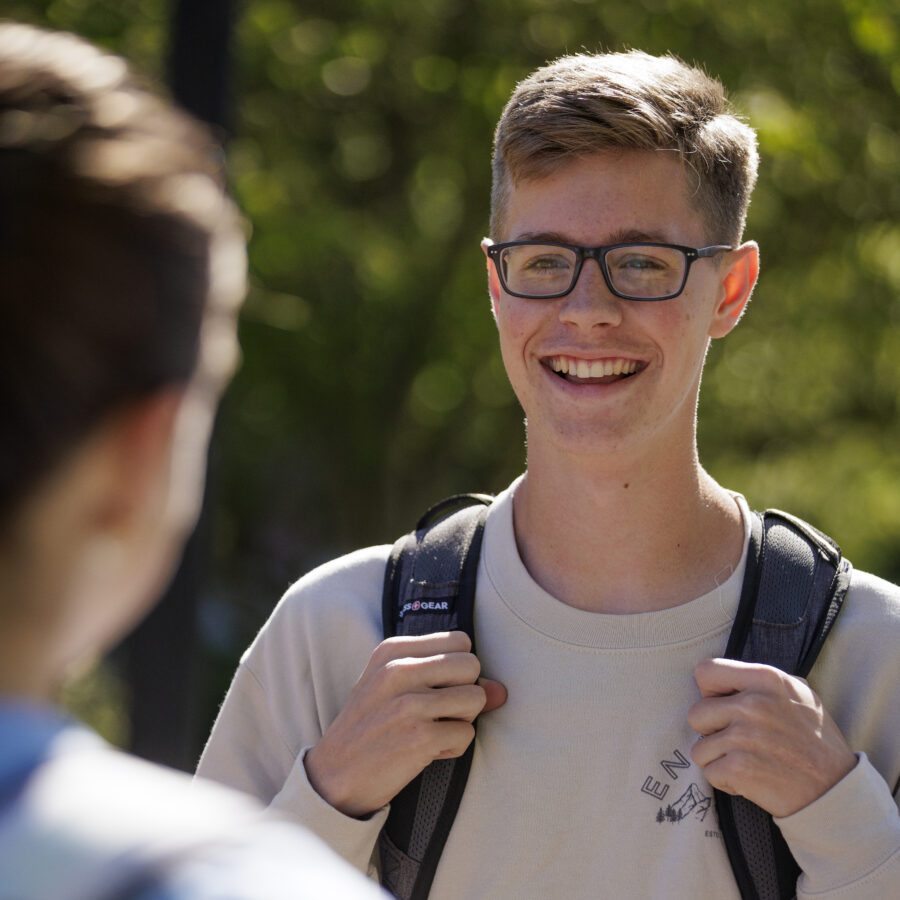English as a Second Language Teaching Minor
The English as a Second Language (ESL) Endorsement or Bilingual Endorsement is designed specifically for teachers who desire to work effectively with culturally and linguistically diverse students.
ESL & Bilingual Endorsement Courses
The emphasis in this course is on a research-based and practical approach of the foundations and characteristics of language assessment. Topics covered include evaluation and structure of assessments, analysis of formal and informal assessments, creation of language assessment instruments for various purposes, using appropriate technology for assessment, and using assessment results for the improvement of teaching. ESL 604 includes a 20 clock-hour practicum in a school setting with bilingual or multilingual students.
An overview of different methods and techniques used in the teaching of language learners is provided in this course. The ESL candidate will develop an understanding of the principles of materials development and the application of their practical use. The candidate will also learn the skills necessary to prepare materials for students in the new language learning environment. ESL 605 includes a 20 clock-hour practicum in a school setting with bilingual or multilingual students.
The study of cultural differences and how they affect communication, both in the ESL classroom and in the speech community is the primary focus of this course. The candidate will gain a greater understanding of the relationship between language and culture. He/she will also learn various methods of how to incorporate culture into the ESL classroom. ESL 606 includes a 20 clock-hour practicum in a school setting with bilingual or multilingual students.
The candidate will engage in a socio-cultural and education examination of learning achievement issues that culturally and linguistically diverse students face in American school communities. The candidate will also examine techniques and strategies to promote collaboration with colleagues and administrators to provide support and a learning environment that embraces differences built upon commonalities. Topics include family literacy, parent communication, models of co-teaching for ESL classrooms, and taking a leadership role in ESL education. ESL 607 includes a 20 clock-hour practicum in a school setting with bilingual or multilingual students.
A study of the major theories and principles of language learning and teaching in the fields of English as a Second Language and Bilingual Education. Attention is given not only to the comparison and contrast of first and second language acquisition, but also to the study of learners’ inter-language and the pragmatic functions of language. ESL-613 includes a 20 clock-hour practicum in a school setting with bilingual or multilingual students which is required to pass the course.
In this course, the candidate will receive an introduction to language and linguistics for the K-12 classroom. The course will focus, but not exclusively, on the English language. The ESL candidate will be introduced to the traditional structure of linguistics (phonetics, phonology, morphology, syntax, semantics, language change) and the contextual structure of linguistics (discourse, dialect, variation, language and culture, the politics of language). Such concepts as language and brain development, language acquisition, and second language learning will be presented.
This course provides an overview of different methods, materials, and techniques used in bilingual teaching. Candidates will explore various instructional theories, approaches, and methods for preparing materials for the language learning and teaching environment including how to prepare and facilitate bilingual programs. Attention is not only given to the principles of material development, but also to the practical use of developing culturally competent language learners in a linguistically-diverse world.
Additional Courses Required to Complete the Masters of Arts in Education: Curriculum & Instruction
It is important that teachers are well-informed about current developments in their fields of expertise. In this course, the candidate will learn about designing and implementing an action research project that will be conducted within the classroom setting. This course will focus on the fundamentals of qualitative and quantitative research including design, methodology, literature review, data analysis and conclusions. The research topics will emerge from questions generated by discussions and a broad view of the literature. The culminating assignment will be a research proposal to be implemented and then presented in EDUC 696. The content focus will be current issues, trends and organizational frameworks affecting education and the impact on teaching as well as learning and by what means they can be improved upon.
This course explores the unique composite of students in today’s classroom. To develop the best learning environment and curriculum for students, teaching practices must be informed by knowledge of current challenges faced by the students. This course will cover the wide variety of student characteristics and/or subgroups we see in classrooms that are part of the American education system. The topics that will be interconnected include the impact of home, society and school on health, mental health, attitudes, behaviors, and especially on academic behavior.
This course examines applied learning theories and research. The candidate will be able to summarize and apply the basic tenets of the theories to his/her own area of specialization; use the appropriate vocabulary and concepts that have been developed by the educational theorists; apply the theories and concepts in a practical teaching setting; reflect upon the outcome; evaluate and design instructional strategies to meet the needs of the P-12 students in the classroom; and critique new ideas and proposals related to applied learning.
Practice is the best tool for learning. This course is designed to give the candidates experiences in exemplary teaching, curriculum development, professional development, and leadership. The focus is student and overall school achievement in a P-12 learning environment. In this course, candidates will complete and then present research findings from their research projects begun in EDUC 607 – Educational Research: Principles and Practices. Prerequisite(s): EDUC 607.

Where Your Future Begins
We Believe. You Belong Here. Discover why Olivet is a place where faith meets calling. Take the first step today.
